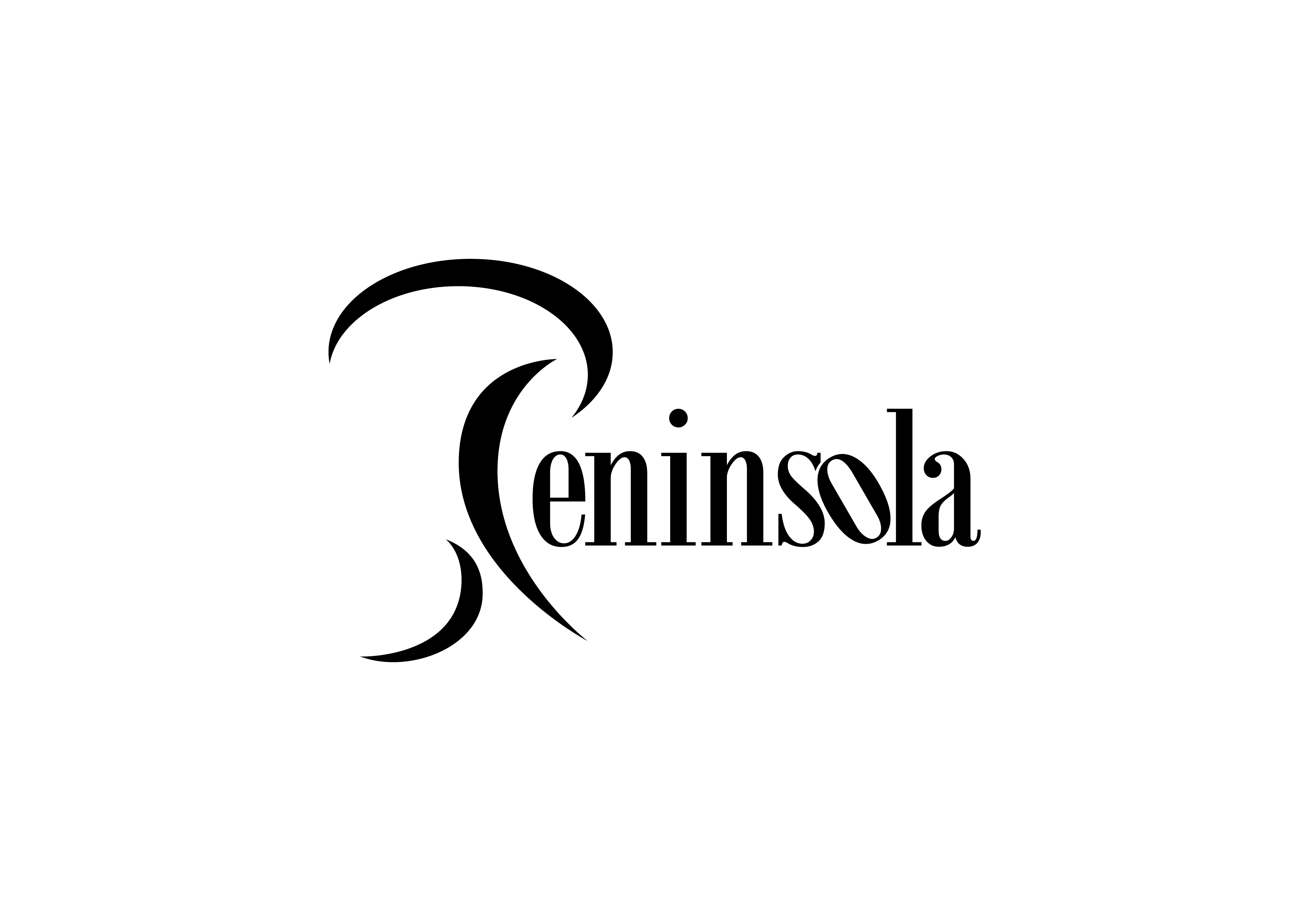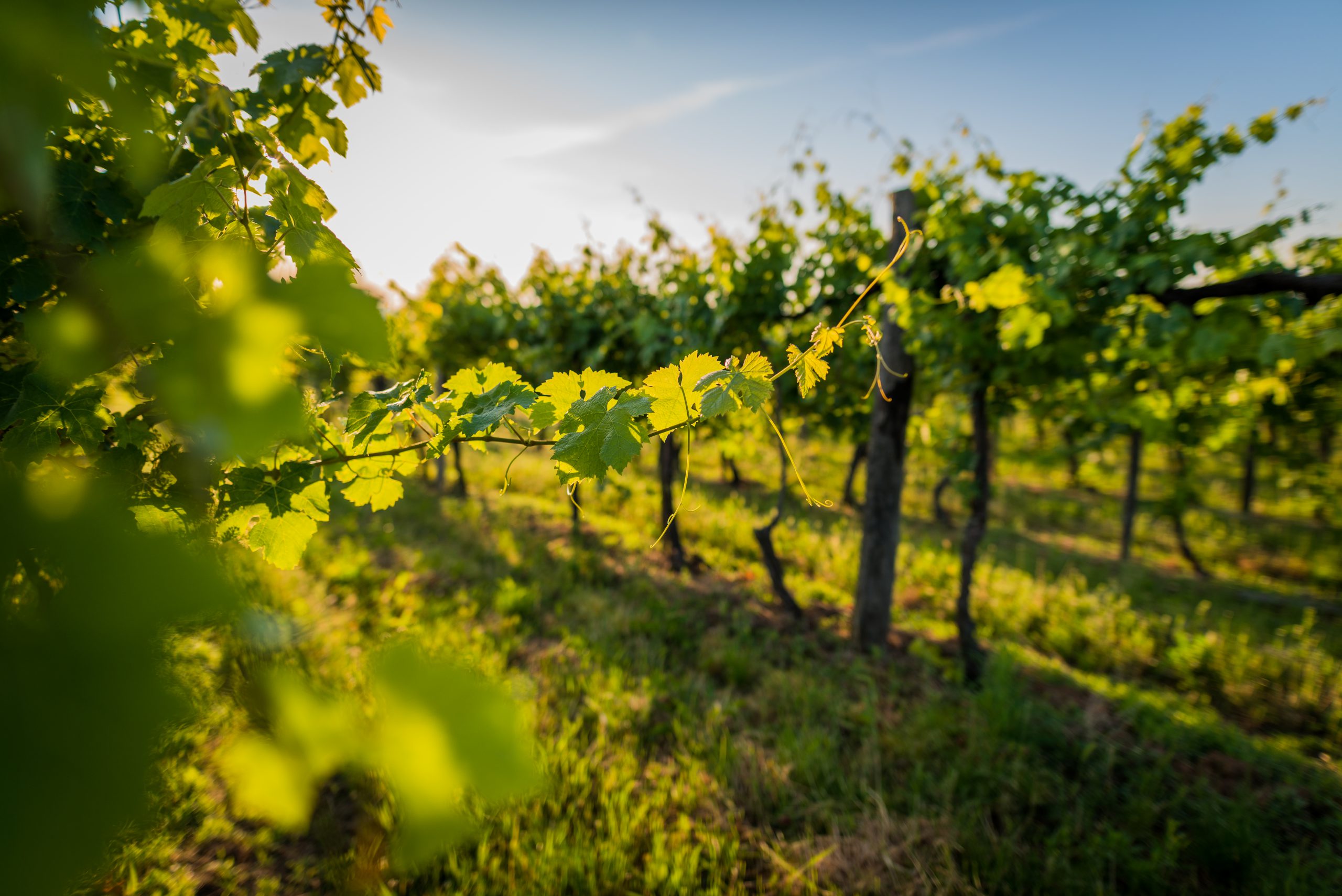The vineyards, which represent the expression of modern viticulture, are located in the Controlled Designation of Origin (DOC) “Prosecco” area for Prosecco and in the Friuli region for the Rosé variety. Our philosophy is focused on promoting low grape yields per hectare, supported by modern training techniques such as Guyot and spur cordon systems, as well as high planting density and low bud load per vine.
Our products come from high-quality grapes, obtained through practices like limiting nitrogen fertilization, optimizing pest management, and studying the optimal environmental conditions for each grape variety. A deep understanding of each vineyard is another key factor in achieving quality wines. This is why qualified agronomists monitor the vineyards throughout the annual vine cycle, with the aim of planning eco-compatible interventions. This results in healthy, high-quality grapes. Even within the same plot, there are significant vegetative differences across different zones, producing grapes with distinct characteristics.
It is therefore essential to develop techniques that closely monitor the productive and vegetative evolution of the vines and their variations over time. This research is fundamental for producing high-quality wines that also exhibit strong identity traits, derived from the cultivation terrain and the vines themselves. To achieve this, we leverage technology and scientific expertise, such as infrared sensor monitoring, to gain a deep understanding of the vineyard’s diversity. The result is our high-quality wine, marked by strong identity characteristics, making Peninsola’s products unique.
Our wines are born from advanced, suitable, and eco-friendly agricultural practices. Our work is based on a conscious approach to viticulture, with continuous plant monitoring and pest management that involves the use of pesticides only when absolutely necessary, while prioritizing low-risk, environmentally friendly products.
All of this, combined with the use of renewable energy—such as the large production of biomass (mainly resulting from vineyard pruning, which is partially converted)—makes our cultivation as eco-sustainable as possible. Additionally, water conservation plays a key role, as our vineyards, which produce our premium wines, do not require irrigation, even in the driest years.
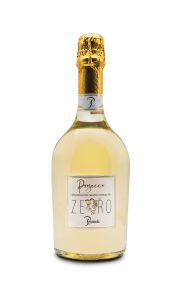
Prosecco doc dosage zero millesimato
Grapevine: 100 % Glera
Harvesting Period: second and third week of September
Collection System: Manual and Mechanical
Alcoholic grade: 11,5 % vol
Sugar residue: les s than 3 g/l +/- 3
Evolution: Martinotti method in autoclave where a 2nd fermentation of at leas t 45 days takes place.
Sensory Analysis
The colour i s a luminous light yellow, the bouquet i s rich and fragrant.
Taste analysis
Harmonious and well balanced, fresh and fruity notes emerge on the palate, pushed up by the complexity of the bouquet.
Perfect as an aperitif, it i s excellent throughout the meal thanks to it s fresh and fruity notes.
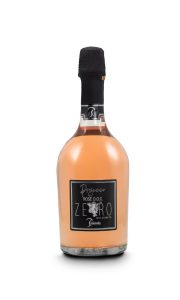
Prosecco doc rosé dosage zero millesimato
Grapevine: 85 % Glera, 15 % Pinot Nero
Harvesting Period: second and third week of September
Collection System: Manual and Mechanical
Alcoholic grade: 11,5 % vol
Sugar residue: less than 3 g/l +/- 3
Evolution: With Martinotti method in autoclave where the 2nd fermentation takes place for at least 90 days.
Sensory Analysis
Brilliant soft pink in colour, it has a fine and persistent perlage.
Delicate and fragrant bouquet, pleasantly fruity with distinct hints of fruit such as strawberry, raspberry, cherry and floral notes such as rose.
Taste analysis
Extremely intriguing, elegant and balanced. Pleasant on the palate, with remarkable freshness, enhanced by a fruity note and an aromatic finish.
The qualitative properties of Pinot Noir enhance the structure of Prosecco by supporting the fragrant and savoury components.
The harmonious synergy of taste and aromatic sensations makes Prosecco ROSE’ Doc the perfect accompaniment for the entire meal.
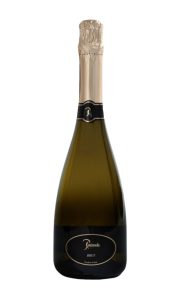
Spumante brut sparkling white wine
Main Grapes: White grapes suitable for the production of sparkling wine, in particular Trebbiano and Garganega
Production area: Grapes coming in particular from the Region of Veneto (North Italy) and Emilia-Romagna (Central Italy)
Soils: SWell exposed, calcareous clayey soil s , which give to the grapes a natural acidity ideal for the production of sparkling wine.
Harvest: Depending on the vintage harves t takes place between the end of Augus t and beginning of September in order to ensure the right
grape maturity and a good acid content Vinification Soft pres s ing of the grapes and fermentation in s tainles s s teel tanks at controlled temperature in order to maintain the natural aromas of the grapes and obtain a bas ic wine rich in acids and perfumes . The secondary
fermentation (foam fermentation) takes place with the inoculation of selected yeas t s i s tainles s s teel tanks at controlled pres sure and temperature (pres sure-tank) following the Charmant method
Colour: Brilliant s traw yellow. Fine and per s i s tent perlage
Bouquet: In the nose i s fragrant and harmonic, with pleasant fruity notes of apple, floral scent s of the flower
Taste: Full and fresh in the palate, s lightly acidic and fruity. In the mouth it i s dry with a pleasant almond after taste
Food pairing: A very ver satile proposal: perfect as an aperitif, the dry and full tas te i s excellent for any meal time, excluded des serts .
Particularly suited to accompany appeti zers, risotto, white meat, shellfish, raw or fried fish. Sugges ted with fresh cheeses, soft to medium- seasoned.
Serving suggestion: 5-6°C
Alcohol content: 11,5% vol
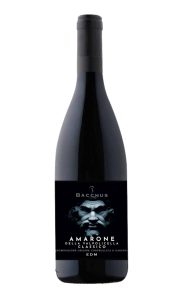
Amarone della valpolicella classico
Amarone della Valpolicella i s a DOCG reserved for a dry red passito wine whose production is permitted in the province of Verona.
«Winter must, cold blood of the grapes» Thus wrote Cassiodorus in the 4th century, ordering the “Acinatico” wine for Theodoric’s table, obtained in Valpolicella from dried grapes; but Catullus had already mentioned «calices amariores» (bitter glasses) in Carme 27 (around 49 BC), perhaps referring to an ances tor of Amarone. The label represents a stone bas-relief depicting the god Dionysus, Bacchus for the Romans, identified as the god of ecstasy, wine, intoxication and the liberation of the senses; he therefore came to represent the essence of creation in it sperennial and wild flow, the divine spirit of an immeasurable reality, the primordial element of the cosmos.
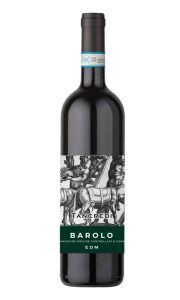
Barolo
Barolo is a red wine with a controlled and guaranteed designation of origin produced in some municipalities in Piedmont. Barolo wine began to appear around the middle of the 19th century, originating from the town of the same name in the Langhe, in the Province of Cuneo, with the estates and cellars already home to the castle of the marquises Tancredi Falletti and Giulia Colbert Falletti of Barolo. It is simply a direct derivative of Nebbiolo grapes and therefore of Nebbiolo wine (or Nebiolo), vinified to obtain an exceptionally rich and harmonious product,
destined to become the ambas sador of Savoy’ s Piedmont in the European courts. What made Barolo important was and is its structure which expresses a complex and enveloping bouquet, capable of developing over time without losing its organoleptic characteristics. The proposed label depicts a Roman mosaic depicting men crushing grapes with their feet ins ide a tank used for winemaking. On the ground, at the edges of the tub itself, you can see the wicker basket s used for harves ting the grapes .
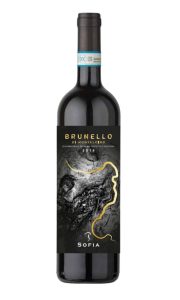
Brunello di Montalcino
Brunello di Montalcino i s a DOCG red wine produced in the territory of Montalcino, a municipality in south-eas tern Tuscany in the province of Siena. It is cons idered among the longes t-lived Italian red wines. The vocation of the Montalcino area to produce high quality wines has been
known for many centuries: in the Middle Ages the municipals tatutes regulated the start date of the harvest. It appears that during the siege of 1553 there was never a shortage of wine, so much so that Biagio di Monluc, defending the wall s of Montalcino, ” rubbed his face with the robust wine” to conceal his suffering. According to the Bolognese Leandro Alberti, Montalcino is «well-known for the good wines that come from those pleasant hills» . The grand ducal auditor Bartolomeo Gherardini in his visit to Montalcino in 1676-1677 reported the production of 6050 tons of wine described as «vigorous wine, but not in large quantities. Charles Thompson in 1744 states that «Montalcino is not very famous except for the goodness of its wines». The label shows an image of an ancient branch of Sangiovese crossed by a golden crack, a sort of journey through time marked by a path that has become precious.
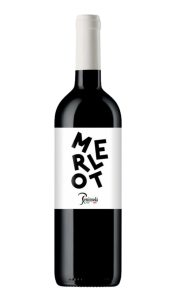
Merlot
Type of wine: Still red wine
Main Grapes: Merlot
Production area: Grape coming in particular from the Region Veneto (North-East Italy).
Soils: A wide variety of different soil compos itions , morainic and volcanic in the hilly region, alluvial and sandy in the plain, with clayey and mineral richness.
Harvest: Depending on the vintage harves t takes place between the end of August and the beginning of September in order to ensure the right
grape maturity and a good acid content.
Vinification: Pressing and maceration to extract the colour and soft tannins. Fermentation at controlled temperature in s tainless steel tanks
and pumping over. Wine rests and refines in steel tanks only for a brief period of time before bottling.
Colour: Deep red with violet reflex.
Bouquet: Fresh and winy with hints of ripe red fruits, cherry, light herby notes.
Taste: Well balanced, dry and sapid, leaves a pleasant sensation of cleanliness and freshness.
Food pairing: Wine to drink throughout the meal, excellent with simple red meat dishes, roasted, salami, soft and medium ripe cheese.
Serving suggestion: 14-16°C
Alcohol content: 12 % vol

Cabernet
Type of wine: Still red wine
Main grapes: Cabernet
Production area: Grape coming in particular from the Region Veneto (North-East Italy).
Soils: A wide variety of different soil compos itions , morainic and volcanic in the hilly region, alluvial and sandy in the plain, with clayey and mineral richness.
Harvest: Depending on the vintage harves t takes place between the end of August and beginning of September in order to ensure the right
grape maturity and a good acid content.
Vinification: Pressing and maceration to extract the colour and soft tannins. Fermentation at controlled temperature in stainless steel tanks
and pumping over. Wine rests and refines in steel tanks only for a brief period of time before bottling.
Colour: Deep red with violet reflex
Bouquet: Fresh and winy with hint s of ripe red fruits, cherry, light herby notes.
Taste: Well balanced, dry and sapid, leaves a pleasant sensation of cleanlines s and freshness.
Food pairing: Wine to drink throughout the meal, excellent with simple red meat dishes, roasted, salami, soft and medium ripe cheese.
Serving suggestion: 14-16°C
Alcohol content: 12,0% vol
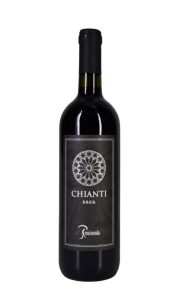
Chianti doc peninsola
Grape variety: 80% Sangiovese, 20% Canaiolo.
Production Techniques: Harvest in the second decade of September, vinification with 2 daily pumpings over at acontrolled temperature of 28°C and maceration on the skins forapprox. 2 weeks. After racking and subsequent malolacticfermentation, the wine is kept on the lees for 1-2 months. Bottling 12 months after harves ting. The wine is put on themarket 2 months after bottling.
Colour: Bright, brilliant ruby red.
Bouquet: Intensely winy with scents of red fruits.
Taste: Harmonious, round and very elegant alcoholic.
Strength: 12,5% vol.
Serving suggestions: Roasts, braised meats, white and redmeats. Serving temperature: Serve at 18-20°C, uncork half an hourbefore serving.
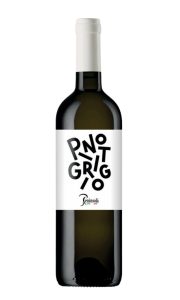
Pinot Grigio DOC Friuli
Appellation: Pinot Grigio DOC Friuli.
Grape variety: 100% Pinot Grigio.
Vineyards: The sandy/gravely/clayey soil s are located in the property of Fiumicello. The average age of the vines is about 15 years .
Harvesting: Between half and the third week of August.
Vinification: The grapes are crushed and separated from the stalks a few minutes after harves ting. The crushed grapes are cooled to 5°C for maceration on the skins in order to extract the primary aromas and greater body. The following day the skins are separated from the musted by a soft pressing and, after a first racking, the alcoholic fermentation begins in steel containers at controlled temperatures of 15-16 ° C.
The color: Bright s traw yellow.
The scent: Very fresh and complex with notes of daisy and wisteria.
The taste: Voluminous, crisp, full, enveloping and velvety.
Pairings: Excellent as an aperitif but al so goes well with soups, fish soups, white meats and pima game. Serve at 8 – 10 °C.
Duration: Best enjoyed young.
Technical data: Alcoholic Gradation 13,0 % vol Res idual Sugar s 2,0 g/l Total Acidity 5 g/l Net Dry Extract 21 g/l
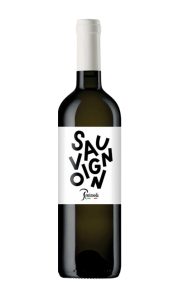
Sauvignon IGT
Denomination: Sauvignon IGT.
Grape variety: Sauvignon grape 100%.
Vineyards: The sandy/gravelly soils are located in the property of Fiumicello, close to the river “Torre”. The average age of the vines is about 15 years.
Harvesting: End of Augus t. Vinification: The grapes are crushed and separated from the stalks a few minutes after harvesting. The crushed grapes are cooled to 5°C for a maceration on the skins in order to extract the primary aromas and greater body. The following day the skins are separated from the musted by a soft pressing and, after a first racking, the alcoholic fermentation begins in steel containers at controlled temperatures of 15-16 °C.
The color: Brights traw yellow.
Perfume: The nose is very fresh, with typical varietal aromas remini scent of bell pepper and tomato leaf wrapped in a bouquet of very
delicate flower s and white fruits. The palate is rich and enveloping while allowing sapidity and freshness to emerge.
The flavor: Harmonic and pleasant, with a pronounced aromatic taste.
Pairings: It goes well with lean appetizers, cheeses of various ages, fish dishes, creams, soups and velvety dishes. Excellent as an aperitif. Serve at 9-11 °C.
Duration: Best enjoyed young.
Technical data: Alcohol content 12,5 % vol. Res idual Sugar s 2, 0g/l Total Acidity 5 g/l Net Dry Extract 21 g/l
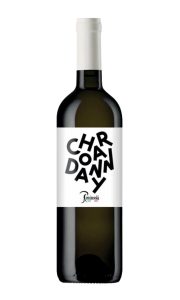
Chardonnay
Type of wine: Still white wine
Main grapes: Chardonnay
Production area: Grapes coming from the IGT area, located between the Regions Veneto, Trentino and Friuli-Venez ia Giulia (North-East Italy).
Soils: In the hilly region as well as in the plains, we find alluvial and sedimentary soils, the composition can vary from fresh and gravelly to clayey and rich in minerals.
Harvest: Depending on the seasonal climate variation, between end of August and beginning of September.
Vinification: Soft pressing of the grapes and fermentation at low controlled temperature in stainless steel tanks. Wine rests and refines in
steel tanks for a brief period of time before bottling.
Colour: Straw yellow with greenish hints.
Bouquet: Pleasantly fresh, with floral and fruity notes of apple and pear, vanilla and butter.
Taste: Well balanced, dry and sapid, leaves a pleasant sensation of cleanliness and freshness.
Food pairing: Wine to drink throughout the meal, excellent with light appetizers and first courses, white meat, salami, soft ripe cheese.
Serving suggestion: 10-12°C
Alcohol content: 11,5% vol
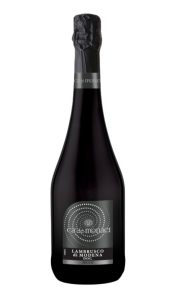
Lambrusco DOC Modena Rosso Amabile
Type of wine: Semi sparkling wine red dry
Main Grapes: Lambrusco Grasparos sa, Salamino, Sorbara, Marani, Maestri, Montericco, Oliva
Production area: Grapes cultivated in the bes t- suited area in the mid-north belt of the province of Modena (Region of Emilia Romagna, central Italy).
Soils: Central area of the Apennines in the Region of Emilia Romagna, a mix of flat lands , foothill s and hills, adequately ventilated and with a good exposure. Distinguished by a great variety of soil compositions: alluvial in the flatlands , medium soil in the hilly areas, mainly calcareous -clayey in the higher hills.
Harvest: Maturity is usually reached between the end of September and the beginning of October, depending on the different Lambrusco’s grape varieties.
Vinification: Traditional red wine vinification, with maceration of the mus t on the leaves in order to extract colour and tannins. Fermentation and foam intake in steel pres sure-tanks at controlled temperature, following the Charmant method.
Colour: The Lambrusco di Modena i s di s tingui shed by a ruby red colour of varying intens ity depending on the production
area, with violet foam, fine and evanescent.
Bouquet: Pleasant bouquet, with pronounced floral and fruity notes, of viola and fresh red fruits, delicate and fragrant.
Taste: Delicate flavour, with a s lightly aromatic dry aftertaste, slightly acid at the palate. Sugges ted as a young and fresh wine.
Food pairing: The Lambrusco di Modena i s ideal with pas ta with meat sauces, succulent red meat di shes, roast and cold cuts of the local tradition. The dry version can accompany tasty and succulent meat dishes, as braised meat and ” zampone” .
Serving suggestion: 10-12°C
Alcohol content: 11,0% vol
Prosecco doc dosage zero millesimato

Grapevine: 100 % Glera
Harvesting Period: second and third week of September
Collection System: Manual and Mechanical
Alcoholic grade: 11,5 % vol
Sugar residue: les s than 3 g/l +/- 3
Evolution: Martinotti method in autoclave where a 2nd fermentation of at leas t 45 days takes place.
Sensory Analysis
The colour i s a luminous light yellow, the bouquet i s rich and fragrant.
Taste analysis
Harmonious and well balanced, fresh and fruity notes emerge on the palate, pushed up by the complexity of the bouquet.
Perfect as an aperitif, it i s excellent throughout the meal thanks to it s fresh and fruity notes.
Prosecco doc rosé dosage zero millesimato

Grapevine: 85 % Glera, 15 % Pinot Nero
Harvesting Period: second and third week of September
Collection System: Manual and Mechanical
Alcoholic grade: 11,5 % vol
Sugar residue: less than 3 g/l +/- 3
Evolution: With Martinotti method in autoclave where the 2nd fermentation takes place for at least 90 days.
Sensory Analysis
Brilliant soft pink in colour, it has a fine and persistent perlage.
Delicate and fragrant bouquet, pleasantly fruity with distinct hints of fruit such as strawberry, raspberry, cherry and floral notes such as rose.
Taste analysis
Extremely intriguing, elegant and balanced. Pleasant on the palate, with remarkable freshness, enhanced by a fruity note and an aromatic finish.
The qualitative properties of Pinot Noir enhance the structure of Prosecco by supporting the fragrant and savoury components.
The harmonious synergy of taste and aromatic sensations makes Prosecco ROSE’ Doc the perfect accompaniment for the entire meal.
Spumante brut sparkling white wine

Main Grapes: White grapes suitable for the production of sparkling wine, in particular Trebbiano and Garganega
Production area: Grapes coming in particular from the Region of Veneto (North Italy) and Emilia-Romagna (Central Italy)
Soils: SWell exposed, calcareous clayey soil s , which give to the grapes a natural acidity ideal for the production of sparkling wine.
Harvest: Depending on the vintage harves t takes place between the end of Augus t and beginning of September in order to ensure the right
grape maturity and a good acid content Vinification Soft pres s ing of the grapes and fermentation in s tainles s s teel tanks at controlled temperature in order to maintain the natural aromas of the grapes and obtain a bas ic wine rich in acids and perfumes . The secondary
fermentation (foam fermentation) takes place with the inoculation of selected yeas t s i s tainles s s teel tanks at controlled pres sure and temperature (pres sure-tank) following the Charmant method
Colour: Brilliant s traw yellow. Fine and per s i s tent perlage
Bouquet: In the nose i s fragrant and harmonic, with pleasant fruity notes of apple, floral scent s of the flower
Taste: Full and fresh in the palate, s lightly acidic and fruity. In the mouth it i s dry with a pleasant almond after taste
Food pairing: A very ver satile proposal: perfect as an aperitif, the dry and full tas te i s excellent for any meal time, excluded des serts .
Particularly suited to accompany appeti zers, risotto, white meat, shellfish, raw or fried fish. Sugges ted with fresh cheeses, soft to medium- seasoned.
Serving suggestion: 5-6°C
Alcohol content: 11,5% vol
Amarone della valpolicella classico

Amarone della Valpolicella i s a DOCG reserved for a dry red passito wine whose production is permitted in the province of Verona.
«Winter must, cold blood of the grapes» Thus wrote Cassiodorus in the 4th century, ordering the “Acinatico” wine for Theodoric’s table, obtained in Valpolicella from dried grapes; but Catullus had already mentioned «calices amariores» (bitter glasses) in Carme 27 (around 49 BC), perhaps referring to an ances tor of Amarone. The label represents a stone bas-relief depicting the god Dionysus, Bacchus for the Romans, identified as the god of ecstasy, wine, intoxication and the liberation of the senses; he therefore came to represent the essence of creation in it sperennial and wild flow, the divine spirit of an immeasurable reality, the primordial element of the cosmos.
Barolo

Barolo is a red wine with a controlled and guaranteed designation of origin produced in some municipalities in Piedmont. Barolo wine began to appear around the middle of the 19th century, originating from the town of the same name in the Langhe, in the Province of Cuneo, with the estates and cellars already home to the castle of the marquises Tancredi Falletti and Giulia Colbert Falletti of Barolo. It is simply a direct derivative of Nebbiolo grapes and therefore of Nebbiolo wine (or Nebiolo), vinified to obtain an exceptionally rich and harmonious product,
destined to become the ambas sador of Savoy’ s Piedmont in the European courts. What made Barolo important was and is its structure which expresses a complex and enveloping bouquet, capable of developing over time without losing its organoleptic characteristics. The proposed label depicts a Roman mosaic depicting men crushing grapes with their feet ins ide a tank used for winemaking. On the ground, at the edges of the tub itself, you can see the wicker basket s used for harves ting the grapes .
Brunello di Montalcino

Brunello di Montalcino i s a DOCG red wine produced in the territory of Montalcino, a municipality in south-eas tern Tuscany in the province of Siena. It is cons idered among the longes t-lived Italian red wines. The vocation of the Montalcino area to produce high quality wines has been
known for many centuries: in the Middle Ages the municipals tatutes regulated the start date of the harvest. It appears that during the siege of 1553 there was never a shortage of wine, so much so that Biagio di Monluc, defending the wall s of Montalcino, ” rubbed his face with the robust wine” to conceal his suffering. According to the Bolognese Leandro Alberti, Montalcino is «well-known for the good wines that come from those pleasant hills» . The grand ducal auditor Bartolomeo Gherardini in his visit to Montalcino in 1676-1677 reported the production of 6050 tons of wine described as «vigorous wine, but not in large quantities. Charles Thompson in 1744 states that «Montalcino is not very famous except for the goodness of its wines». The label shows an image of an ancient branch of Sangiovese crossed by a golden crack, a sort of journey through time marked by a path that has become precious.
Merlot

Type of wine: Still red wine
Main Grapes: Merlot
Production area: Grape coming in particular from the Region Veneto (North-East Italy).
Soils: A wide variety of different soil compos itions , morainic and volcanic in the hilly region, alluvial and sandy in the plain, with clayey and mineral richness.
Harvest: Depending on the vintage harves t takes place between the end of August and the beginning of September in order to ensure the right
grape maturity and a good acid content.
Vinification: Pressing and maceration to extract the colour and soft tannins. Fermentation at controlled temperature in s tainless steel tanks
and pumping over. Wine rests and refines in steel tanks only for a brief period of time before bottling.
Colour: Deep red with violet reflex.
Bouquet: Fresh and winy with hints of ripe red fruits, cherry, light herby notes.
Taste: Well balanced, dry and sapid, leaves a pleasant sensation of cleanliness and freshness.
Food pairing: Wine to drink throughout the meal, excellent with simple red meat dishes, roasted, salami, soft and medium ripe cheese.
Serving suggestion: 14-16°C
Alcohol content: 12 % vol
Cabernet

Type of wine: Still red wine
Main grapes: Cabernet
Production area: Grape coming in particular from the Region Veneto (North-East Italy).
Soils: A wide variety of different soil compos itions , morainic and volcanic in the hilly region, alluvial and sandy in the plain, with clayey and mineral richness.
Harvest: Depending on the vintage harves t takes place between the end of August and beginning of September in order to ensure the right
grape maturity and a good acid content.
Vinification: Pressing and maceration to extract the colour and soft tannins. Fermentation at controlled temperature in stainless steel tanks
and pumping over. Wine rests and refines in steel tanks only for a brief period of time before bottling.
Colour: Deep red with violet reflex
Bouquet: Fresh and winy with hint s of ripe red fruits, cherry, light herby notes.
Taste: Well balanced, dry and sapid, leaves a pleasant sensation of cleanlines s and freshness.
Food pairing: Wine to drink throughout the meal, excellent with simple red meat dishes, roasted, salami, soft and medium ripe cheese.
Serving suggestion: 14-16°C
Alcohol content: 12,0% vol
Chianti doc peninsola

Grape variety: 80% Sangiovese, 20% Canaiolo.
Production Techniques: Harvest in the second decade of September, vinification with 2 daily pumpings over at acontrolled temperature of 28°C and maceration on the skins forapprox. 2 weeks. After racking and subsequent malolacticfermentation, the wine is kept on the lees for 1-2 months. Bottling 12 months after harves ting. The wine is put on themarket 2 months after bottling.
Colour: Bright, brilliant ruby red.
Bouquet: Intensely winy with scents of red fruits.
Taste: Harmonious, round and very elegant alcoholic.
Strength: 12,5% vol.
Serving suggestions: Roasts, braised meats, white and redmeats. Serving temperature: Serve at 18-20°C, uncork half an hourbefore serving.
Pinot Grigio DOC Friuli

Appellation: Pinot Grigio DOC Friuli.
Grape variety: 100% Pinot Grigio.
Vineyards: The sandy/gravely/clayey soil s are located in the property of Fiumicello. The average age of the vines is about 15 years .
Harvesting: Between half and the third week of August.
Vinification: The grapes are crushed and separated from the stalks a few minutes after harves ting. The crushed grapes are cooled to 5°C for maceration on the skins in order to extract the primary aromas and greater body. The following day the skins are separated from the musted by a soft pressing and, after a first racking, the alcoholic fermentation begins in steel containers at controlled temperatures of 15-16 ° C.
The color: Bright s traw yellow.
The scent: Very fresh and complex with notes of daisy and wisteria.
The taste: Voluminous, crisp, full, enveloping and velvety.
Pairings: Excellent as an aperitif but al so goes well with soups, fish soups, white meats and pima game. Serve at 8 – 10 °C.
Duration: Best enjoyed young.
Technical data: Alcoholic Gradation 13,0 % vol Res idual Sugar s 2,0 g/l Total Acidity 5 g/l Net Dry Extract 21 g/l
Sauvignon IGT

Denomination: Sauvignon IGT.
Grape variety: Sauvignon grape 100%.
Vineyards: The sandy/gravelly soils are located in the property of Fiumicello, close to the river “Torre”. The average age of the vines is about 15 years.
Harvesting: End of Augus t. Vinification: The grapes are crushed and separated from the stalks a few minutes after harvesting. The crushed grapes are cooled to 5°C for a maceration on the skins in order to extract the primary aromas and greater body. The following day the skins are separated from the musted by a soft pressing and, after a first racking, the alcoholic fermentation begins in steel containers at controlled temperatures of 15-16 °C.
The color: Brights traw yellow.
Perfume: The nose is very fresh, with typical varietal aromas remini scent of bell pepper and tomato leaf wrapped in a bouquet of very
delicate flower s and white fruits. The palate is rich and enveloping while allowing sapidity and freshness to emerge.
The flavor: Harmonic and pleasant, with a pronounced aromatic taste.
Pairings: It goes well with lean appetizers, cheeses of various ages, fish dishes, creams, soups and velvety dishes. Excellent as an aperitif. Serve at 9-11 °C.
Duration: Best enjoyed young.
Technical data: Alcohol content 12,5 % vol. Res idual Sugar s 2, 0g/l Total Acidity 5 g/l Net Dry Extract 21 g/l
Chardonnay

Type of wine: Still white wine
Main grapes: Chardonnay
Production area: Grapes coming from the IGT area, located between the Regions Veneto, Trentino and Friuli-Venez ia Giulia (North-East Italy).
Soils: In the hilly region as well as in the plains, we find alluvial and sedimentary soils, the composition can vary from fresh and gravelly to clayey and rich in minerals.
Harvest: Depending on the seasonal climate variation, between end of August and beginning of September.
Vinification: Soft pressing of the grapes and fermentation at low controlled temperature in stainless steel tanks. Wine rests and refines in
steel tanks for a brief period of time before bottling.
Colour: Straw yellow with greenish hints.
Bouquet: Pleasantly fresh, with floral and fruity notes of apple and pear, vanilla and butter.
Taste: Well balanced, dry and sapid, leaves a pleasant sensation of cleanliness and freshness.
Food pairing: Wine to drink throughout the meal, excellent with light appetizers and first courses, white meat, salami, soft ripe cheese.
Serving suggestion: 10-12°C
Alcohol content: 11,5% vol
Lambrusco DOC Modena Rosso Amabile

Type of wine: Semi sparkling wine red dry
Main Grapes: Lambrusco Grasparos sa, Salamino, Sorbara, Marani, Maestri, Montericco, Oliva
Production area: Grapes cultivated in the bes t- suited area in the mid-north belt of the province of Modena (Region of Emilia Romagna, central Italy).
Soils: Central area of the Apennines in the Region of Emilia Romagna, a mix of flat lands , foothill s and hills, adequately ventilated and with a good exposure. Distinguished by a great variety of soil compositions: alluvial in the flatlands , medium soil in the hilly areas, mainly calcareous -clayey in the higher hills.
Harvest: Maturity is usually reached between the end of September and the beginning of October, depending on the different Lambrusco’s grape varieties.
Vinification: Traditional red wine vinification, with maceration of the mus t on the leaves in order to extract colour and tannins. Fermentation and foam intake in steel pres sure-tanks at controlled temperature, following the Charmant method.
Colour: The Lambrusco di Modena i s di s tingui shed by a ruby red colour of varying intens ity depending on the production
area, with violet foam, fine and evanescent.
Bouquet: Pleasant bouquet, with pronounced floral and fruity notes, of viola and fresh red fruits, delicate and fragrant.
Taste: Delicate flavour, with a s lightly aromatic dry aftertaste, slightly acid at the palate. Sugges ted as a young and fresh wine.
Food pairing: The Lambrusco di Modena i s ideal with pas ta with meat sauces, succulent red meat di shes, roast and cold cuts of the local tradition. The dry version can accompany tasty and succulent meat dishes, as braised meat and ” zampone” .
Serving suggestion: 10-12°C
Alcohol content: 11,0% vol


